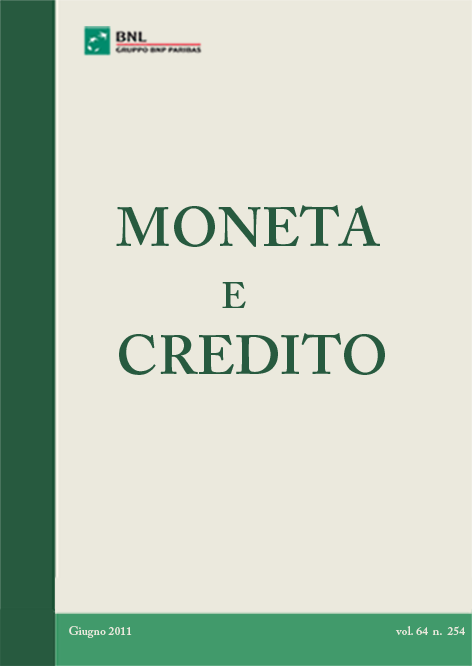Economie in crisi: Eurolandia dalla resistenza alla ricostruzione.(Economies in Crisis: Euroland from Resistance to Reconstruction)
DOI:
https://doi.org/10.13133/2037-3651/9494Keywords:
Aggregate debt, eurogovernance, intergovernmental coordinationAbstract
In this article we underline the effects of the crisis that erupted in the U.S. in 2008, due to financial hazard, and then spread everywhere, to assess how the euro zone (EMU) and its countries have acted. We will consider two periods that the EMU has passed through, each characterized by a different attitude towards the crisis: diversified resistance (with more deficits and higher debt, that in many countries was due to bail out banks); unified resistance (intergovernmental coordination, with a common special vehicle (EFSF), ratified by Ecofin and the European Council). We conclude with references to 2011 when the “regulation with actions for growth” might begin.
JEL: E00, E02
References
COMMISSIONE EUROPEA (2010), Public Finances in EMU, vol. 4, Brussels.
QUADRIO CURZIO A. (2009), "L’Europa e l’Italia economica", Il Mulino, n. 6, novembre-dicembre, pp. 968-976.
QUADRIO CURZIO A. (2010), "The Greek crisis and the European crisis. How to face them", Economia Politica. Journal of Analytical and Institutional Economics, vol. XXVII, n. 1, aprile, pp. 3-8.
QUADRIO CURZIO A. (2010), "La crisi greca spaccherà Eurolandia?", Il Mulino, n. 3, maggio-giugno, pp. 416-424.
QUADRIO CURZIO A. (2011), "A proposito di bond europei", Il Mulino, n. 2, marzo-aprile, pp. 282-290.
Downloads
Published
Issue
Section
License
All material in this website and every article published by the review are licensed under a Creative Commons Attribution - Non commercial - No derivates 4.0 International license. Authors retain all rights on their works and grant the right to first publication to the review under the aforementioned license.


